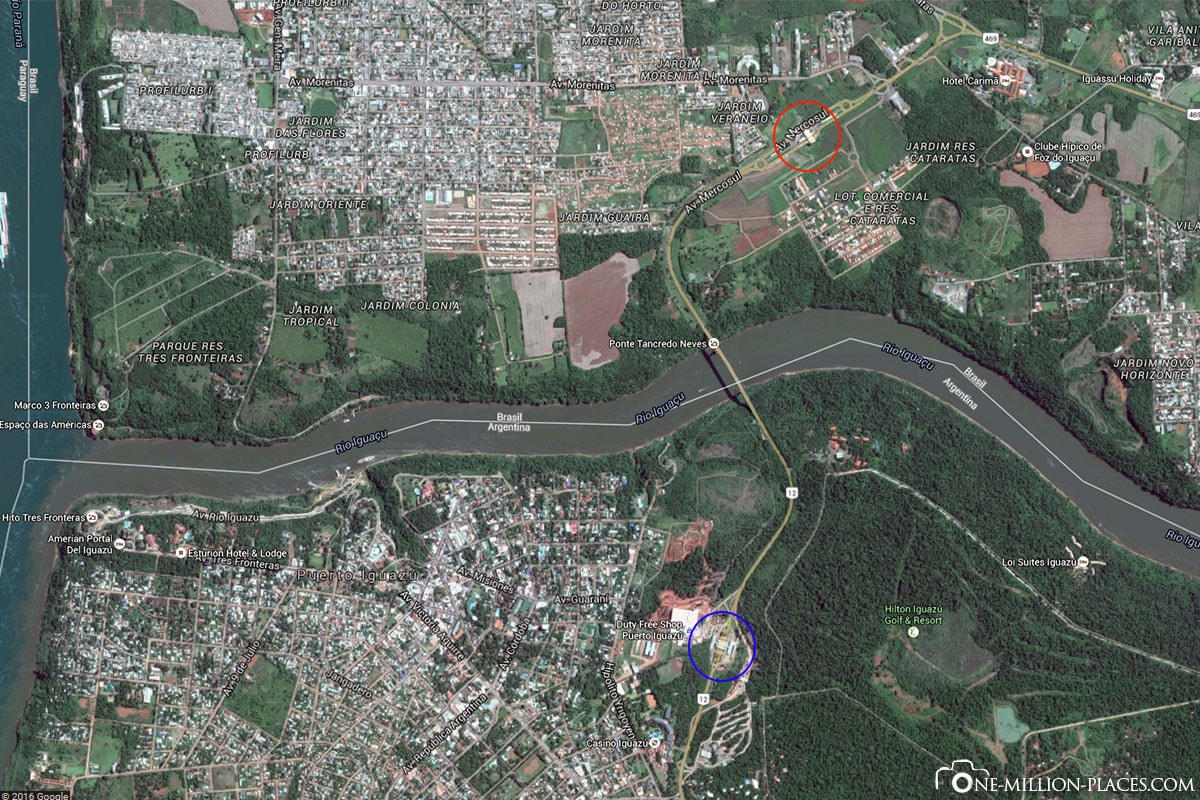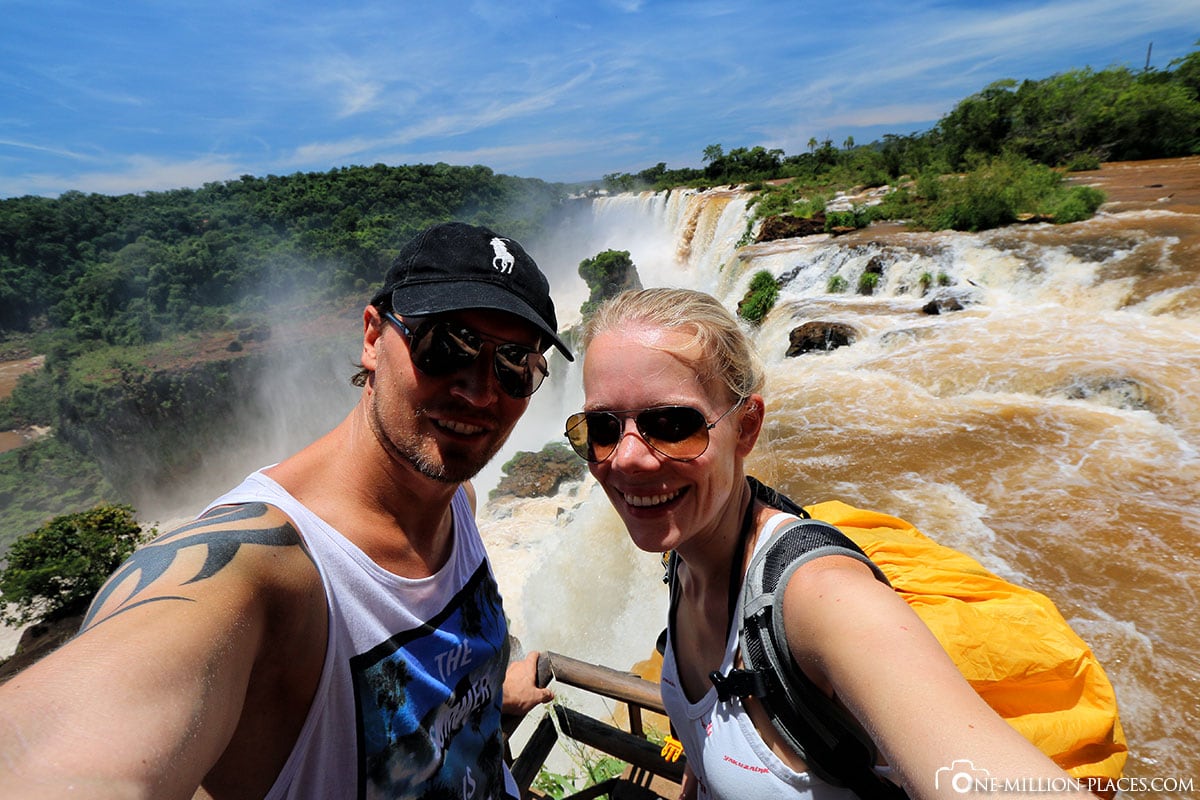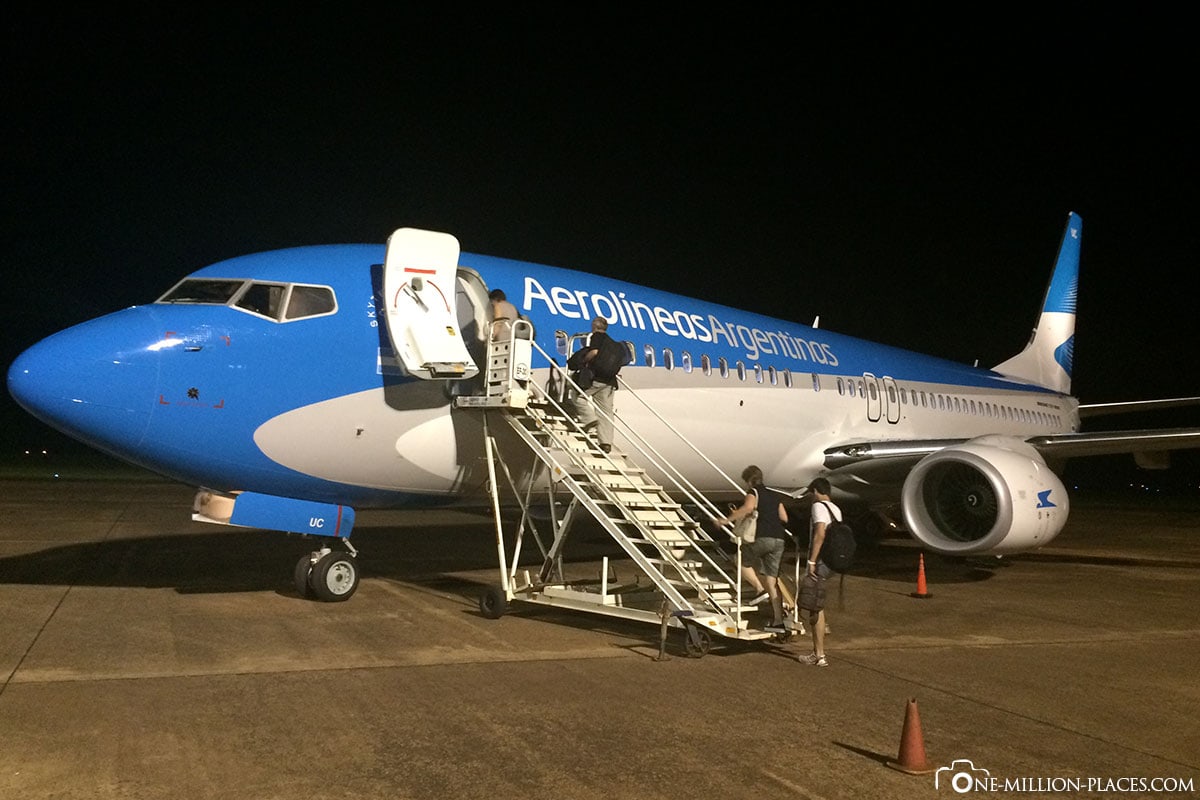After we had looked at the Brazilian part of the Iguazu waterfalls yesterday, the Argentine side was still on the agenda.

Table of contents
From Foz do Iguau (Brazil) to Puerto Iguaza (Argentina)
When we arrived back at our hotel from the waterfalls in Brazil, we took our suitcases and took the city bus to Foz do Iguau. From there we continued with the international city bus to the Brazilian border. Since we had to leave, the bus driver let us out and said that we should take the next bus to Argentina. Since the departure was fast, we (and some others) stood again after 10 minutes at the stop and waited and waited… but somehow there was no bus left!
We thought, ok, it can’t be that far to the Argentine border and just walked with another German, who had also waited there, with all our luggage. Unfortunately, we underestimated the distance a bit… It is only about 3 kilometers over the Rio Iguacu from the Brazilian to the Argentine border control… but with 20 kilograms of suitcase, backpack and at over 30 degrees, that’s no fun! After an hour we arrived in Argentina quite finished.
Our hostel in Puerto Iguaza
The entry to Argentina went super fast, so that we could take the next bus to Puerto Iguaza. Not far from the bus terminal was our hostel Iguaza Falls , which we chose for the great location, the good reviews and the unbeatable price.
After we had unloaded our belongings in the room, we wanted to go quickly to the bank, to a supermarket and something to eat. At the traffic lights in front of our hostel we met two German girls who also stayed in the same hostel. So we finished this evening in four first in a small restaurant in the city and later in the hostel.
The Iguazu Waterfalls (Argentine side)
From the bus terminal in Puerto Iguazu, there is a bus every 20 minutes to the National Park, which, like the Brazilian side, is a UNESCO World Heritage Site. Arriving at the park, we were amazed that there was no queue at the tills at all.
The park is also much larger than the one on the Brazilian side. In the park itself there are several different paths, of which we have passed the three most important ones.
The Upper Trail
On the one hand, there is the Upper Trail, which goes along above the falls.
The Lower Trail
Then you have a Lower Trail that goes down below the falls. At one point you get so close to the falls here that you get completely wet.
The viewpoint “Garganta de Diabolo”
From a railway station in the middle of the park, a small train runs to the “Garganta de Diabolo” lookout point, the Devil’s Gorge – a gigantic waterfall gorge. Through the spray of water, a beautiful rainbow has formed over the gorge. The enormous sound of the downtrunning water was, as in other places, really madness.
A video of the waterfalls
The falls are really incredibly beautiful and impressive and we spent about 3.5 hours in the park. Here is a short video of the waterfalls.
In many other blogs we had read that it takes almost 2 days for the Argentine side of the cases to see everything. We took a lot of time at all the viewpoints and walked everything – and took about 5 hours for the Upper & Lower Trail and the Devil’s Mouth.
Our conclusion on the waterfalls of Iguazu
Overall, from our point of view, it is really worthwhile to visit both sides, although we liked the Argentine side a little better. From the Brazilian side you get a very good panoramic view over the falls, on the Argentinian side you have several different hiking trails and get a little closer to the cases. For this, the park entrance and the bus here is also somewhat more expensive (together about 36 euros per person).
After the park we went back to the hostel, took a quick shower and talked a little with the two girls from Germany. Then we were picked up by a minibus and taken to the airport. The minibus, which takes you to various hostels and inns in Puerto Iguazu, is a very inexpensive way to get a taxi. At 9.50 p.m. our plane went to Buenos Aires.



